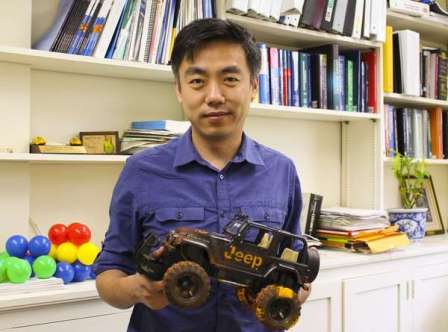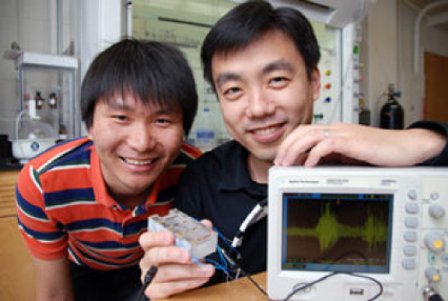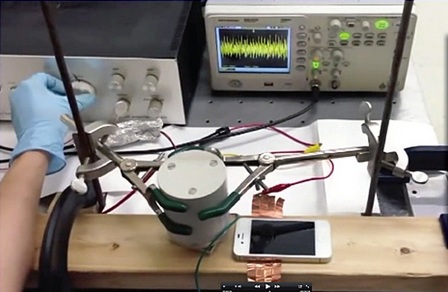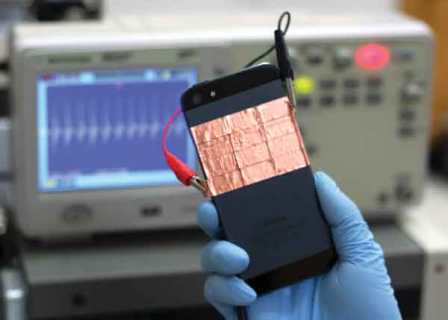Categories: Featured Articles » Interesting electrical news
Number of views: 8590
Comments on the article: 1
Nanogenerators for charging portable devices
A team of engineers from several universities has developed something that in the future will help solve the problem of late discharge of batteries from portable electronic devices such as cell phones, smartphones, tablets and others. Gadgets can be recharged literally on the go, eliminating the need to connect to an outlet using an electric wire.

Nano generators built directly into the case or in the case of a mobile device will collect and convert the energy of vibration of a surface, such as the passenger seat of a moving car, into electricity and charge the battery of a mobile device, such as a smartphone.
Associate Professor of Materials Science and Engineering at the University of Wisconsin at Madison, Xudong Wang, believes that the development of this idea will lead to the creation of self-charging personal electronics.

Xudong Wang, together with his student Yanchao Mao and co-authors from Sun Yat-sen University in China, and the University of Minnesota in Duluth, USA, described their invention, - mesoporous piezoelectric nanogenerator, in an article for Advanced Energy Materials magazine on January 27, 2014.

The nanogenerator basically uses a piezoelectric polymer material called PVDF (polyvinylidene fluoride). Piezoelectric materials are inherently capable of generating electricity by mechanical force. They are also mechanically deformed under the influence of an electric field.
Instead of the usual deformation or the action of an electric field, the researchers included zinc oxide nanoparticles into the PVDF thin film, which will now allow obtaining piezoelectric effect even with slight vibrations, to then accumulate electrical energy.
Then the nanoparticles were etched from the film, resulting in interconnected pores - “mesopores” - a material similar to a sponge. It was such a spongy material that was the key to the conversion of vibrational energy. Xudong Wang says that the softer the material, the more sensitive it is to small vibrations.

The nanogenerator itself includes thin plates of electrodes on both sides of a mesoporous polymer film that can be attached to any kind of surface, be it smooth human skin, or some other uneven surface.
If we talk about smartphones, the mass of the device will help strengthen the generated electrical power, due to the increase in bias. For example, a person simply walks or runs, and thanks to this, the smartphone is effectively charged.
In the future, nanogenerators may well become an integral part of many electronic devices, for example, as a back panel or device case, to directly supply it with energy received from environmental vibrations.
The team believes that the simplicity of manufacturing will allow to scale such nanogenerator plants to large sizes. And the ability to adjust the mechanical properties of the films and their design will make it possible to implement structures both for powering the phones and for autonomous powering the sensor systems.
See also at bgv.electricianexp.com
:
